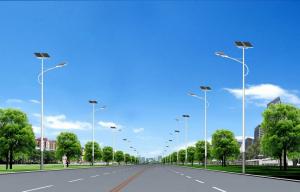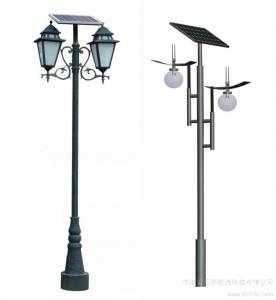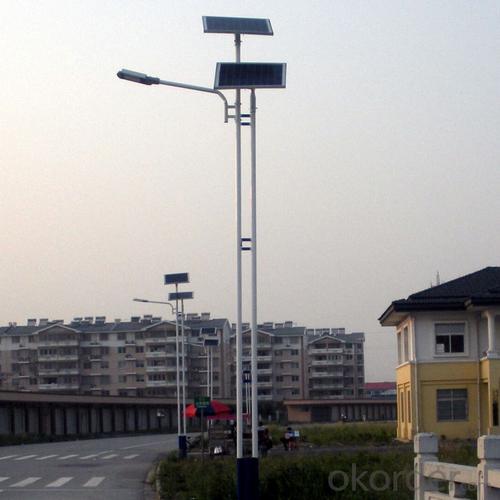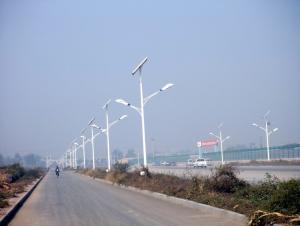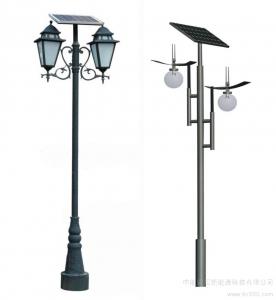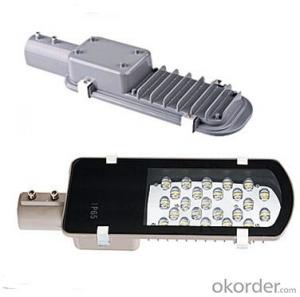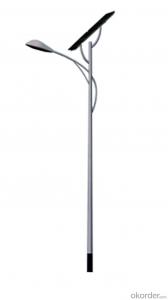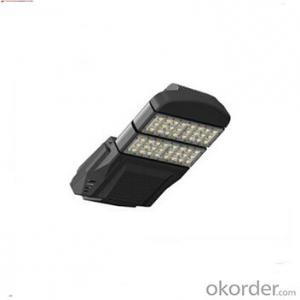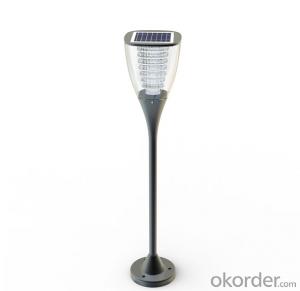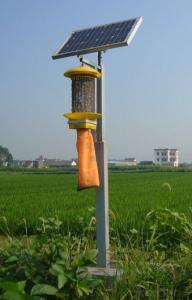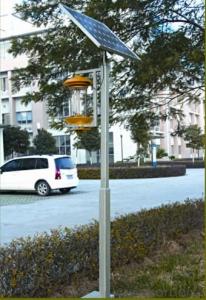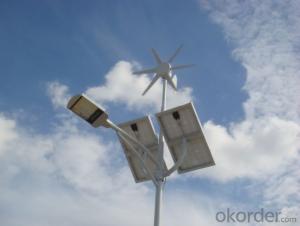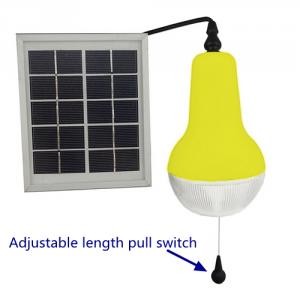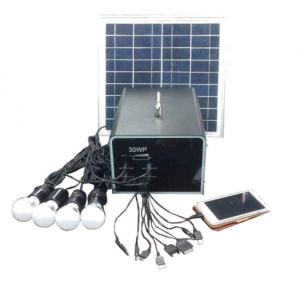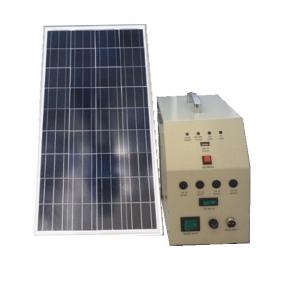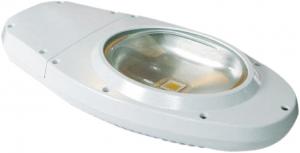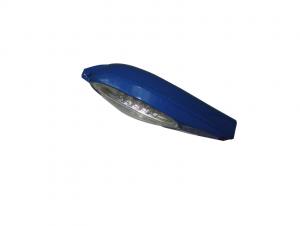Motion Detector Solar Light - High Efficiency JMTL-002
- Loading Port:
- Shanghai
- Payment Terms:
- TT or LC
- Min Order Qty:
- 10 pc
- Supply Capability:
- 10000 pc/month
OKorder Service Pledge
OKorder Financial Service
You Might Also Like
1, Product desciption
Inverter circuits designed to produce a variable output voltage range are often used within motor speed controllers.
The DC power for the inverter section can be derived from a normal AC wall outlet or some other source. Control and feedback circuitry is used to adjust the final output of the inverter section which will ultimately determine the speed of the motor operating under its mechanical load.
Motor speed control needs are numerous and include things like: industrial motor driven equipment, electric vehicles, rail transport systems, and power tools. (See related: variable-frequency drive ) Switching states are developed for positive, negative and zero voltages as per the patterns given in the switching Table.
The generated gate pulses are given to each switch in accordance with the developed pattern and thus the output is obtained.
Solar power is energy from the sun. "Solar" is the Latin word for "sun" and
And Powerful source of energy. Without it, there will be no life.
Solar energy is considered as a serious source of energy for many years
of the vast amounts of energy that is made freely available, if harnessed by modern technology.
A magnifying glass can be used to heat up a small amount of water.
The short piece of copper tube is sealed at one end and filled with water.
And magnifying glass is then used to warm up the pipe.
Using more than one magnifying glass will increase the temperature more rapidly.
2, Features of the product
Inverters convert low frequency main AC power to higher frequency for use in induction heating.
To do this, AC power is first rectified to provide DC power. The inverter then changes the DC power to high frequency AC power. Due to the reduction in the number of DC Sources employed, the structure becomes more reliable and the output voltage has higher resolution due to an increase in the number of steps so that the reference sinusoidal voltage can be better achieved.
This configuration has recently become very popular in AC power supply and adjustable speed drive applications. This new inverter can avoid extra clamping diodes or voltage balancing capacitors. There are three kinds of level shifted modulation techniques, namely: 1,High and stable conversion efficienly based on over 4 years professional experience
2 ,High reliability with guaranteed +/-10% output power tolerance
3,Proven materials,tempered front glass,and a sturdy anodized aluminum frame allow modules to operate reliably in multiple mountily configurations
4,Combination of high efficicncy and attractive appearance
The first thing to figure out is the length of road in need of street lights.
This can be a small entrance road only a couple hundred of feet long to miles of streets through an area. Does the area currently have any type of lighting available.
What is the reason for needing street lights in this area
Is the electrical grid already nearby or would you need to call in the power company to bring in electrical lines.
If the electric needs to be brought to the area, how much is this going to cost? Depending on how far the grid electric is from the location of the needed lighting, this can be quite expensive.
How much lighting is needed on the street? Do the lights need to be dark sky compliant.
Do the street lights need to run from dusk to dawn or for only a specified number of hours at night.
Are the street lights able to dim in the middle of the night and still provide enough lighting.
These questions need to be answered before you can decide on how many lights you will need to complete the project.
3, Detailed Specification
| ||||||||||||||||||||||||||||||||||||||||||||||||
4, Product Image
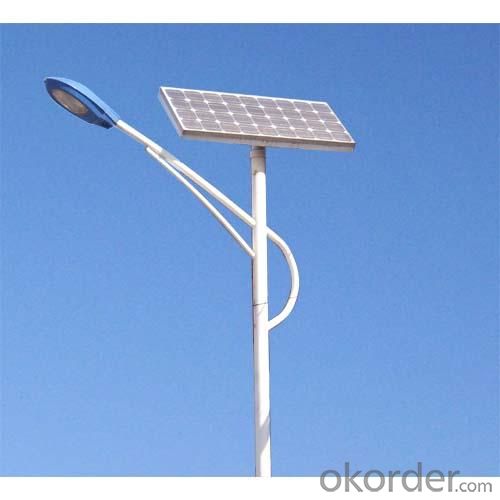
- Q: What is the cost of installing solar lights?
- The cost of installing solar lights can vary depending on various factors such as the number of lights needed, their quality and features, installation complexity, and location. On average, the cost can range from $100 to $1,500 per light.
- Q: Do solar lights have adjustable light color temperature for different moods?
- No, solar lights typically do not have adjustable light color temperature for different moods. Most solar lights feature a fixed color temperature that is designed to provide consistent illumination throughout the night.
- Q: Are there solar lights for bicycles or motorcycles?
- Yes, there are solar lights available for bicycles and motorcycles. These lights are designed to be energy-efficient and environmentally friendly, using solar power to charge their batteries. They typically come in the form of LED lights that can be attached to the handlebars, seat post, or other parts of the bike or motorcycle. Solar lights for bicycles or motorcycles are a great alternative to traditional battery-powered lights, as they do not require constant replacement of batteries and can be recharged simply by being exposed to sunlight. This makes them convenient and cost-effective options for enhancing visibility and safety while riding during nighttime or in low-light conditions.
- Q: How do you determine the appropriate spacing between solar lights?
- The appropriate spacing between solar lights is determined by considering factors such as the desired level of illumination, the area to be covered, and the brightness of the lights. Additionally, the specific purpose of the lights, whether it's for decorative or functional purposes, can also influence the spacing. In general, it is important to strike a balance between providing sufficient lighting while avoiding overcrowding, ensuring an aesthetically pleasing and effective distribution of light throughout the desired area.
- Q: Are solar lights suitable for use in off-grid cabins or homes?
- Off-grid cabins or homes can make great use of solar lights. These lights offer an excellent alternative for providing lighting since they operate by harnessing energy from the sun through solar panels and storing it in batteries. This makes them highly suitable for off-grid locations where access to electricity may be limited or nonexistent. There are several advantages to using solar lights in off-grid cabins or homes. Firstly, they are environmentally friendly as they rely on renewable solar energy, reducing the carbon footprint and promoting sustainability. Secondly, they are cost-effective in the long run as they do not require electricity from the grid, resulting in lower energy bills. Additionally, solar lights are easy to install and maintain, making them convenient for off-grid living. Moreover, solar lights can meet various lighting needs, including interior lighting, outdoor lighting, and security lighting. They come in different types, such as solar lanterns, solar floodlights, or solar-powered string lights, allowing homeowners to choose the most suitable option for their specific needs. However, it's important to consider that solar lights may have limitations in areas with scarce sunlight, such as extremely cloudy or rainy regions. In such cases, alternative lighting solutions may be necessary. Additionally, the capacity of the solar panels and batteries should be appropriately sized to ensure sufficient energy storage during extended periods without sunlight. Overall, solar lights offer a practical and efficient lighting solution for off-grid cabins or homes. They provide sustainable, cost-effective, and reliable lighting while reducing reliance on traditional electricity sources.
- Q: Can solar lights be used for airport runway or taxiway lighting?
- Yes, solar lights can be used for airport runway or taxiway lighting. Solar-powered aviation lights are increasingly being used to enhance visibility and safety on airport runways and taxiways. These lights are self-sufficient, using solar panels to collect and store energy from the sun, which powers the lights at night or during low-light conditions. Solar lights for airport lighting are cost-effective, environmentally friendly, and provide reliable illumination for pilots and ground staff.
- Q: How do solar lights handle windy conditions?
- Solar lights are built to endure different weather conditions, including wind, and are designed to be long-lasting. Most solar lights are made with tough materials like high-quality plastic or metal, which can withstand wind speeds of 50 miles per hour or more. Furthermore, they often have features like stake or anchor systems to firmly secure them in the ground, preventing them from getting blown away by strong winds. Some solar lights also have adjustable or flexible parts, such as the solar panel or light head, which help them handle windy conditions better. These parts can be positioned in a way that reduces wind resistance, minimizing the chances of the lights being damaged or knocked over. Additionally, solar lights are designed with a low center of gravity to enhance their stability. This ensures that they won't tip over or be blown away, even in strong gusts of wind. Manufacturers also take into account aerodynamics when designing solar lights, aiming to minimize wind resistance and increase overall stability. However, it is important to note that extremely severe weather conditions like hurricanes or tornadoes can present a greater challenge for solar lights. In such cases, it is advisable to take precautions by temporarily removing the lights or securing them indoors until the weather improves. Overall, solar lights are engineered to handle windy conditions and are generally dependable, sturdy, and capable of withstanding the forces of nature.
- Q: Can solar lights be used for illuminating outdoor wedding venues?
- Yes, solar lights can be used to illuminate outdoor wedding venues. They are a great eco-friendly and cost-effective option for providing ambient lighting, creating a magical atmosphere for the event. Additionally, solar lights can be easily installed and do not require any wiring or electricity, making them a convenient choice for outdoor venues.
- Q: Do solar lights have adjustable color temperature?
- No, solar lights do not typically have adjustable color temperature. The color temperature of solar lights is determined by the type of LED (light-emitting diode) used in the fixture. Different types of LEDs emit light at different color temperatures, such as warm white (2700K-3000K), cool white (4000K-4500K), or daylight (5000K-6500K). Once the LED is installed in the solar light, the color temperature cannot be adjusted. However, some solar lights may offer different models or options with varying color temperatures to suit different preferences or lighting needs.
- Q: How do I prevent theft of solar lights?
- There are a few measures you can take to prevent theft of solar lights. Firstly, consider installing security cameras or motion sensor lights in the area where the lights are placed. This can deter potential thieves and provide evidence in case of theft. Additionally, you can use tamper-proof screws or bolts to secure the lights firmly to the ground or mounting surface. Another option is to mark your solar lights with personalized engravings or unique labels, making them less attractive to thieves as they become easily identifiable. Finally, engaging with your community and neighbors can also be helpful by keeping an eye out for any suspicious activity and reporting it promptly.
Send your message to us
Motion Detector Solar Light - High Efficiency JMTL-002
- Loading Port:
- Shanghai
- Payment Terms:
- TT or LC
- Min Order Qty:
- 10 pc
- Supply Capability:
- 10000 pc/month
OKorder Service Pledge
OKorder Financial Service
Similar products
Hot products
Hot Searches
Related keywords

